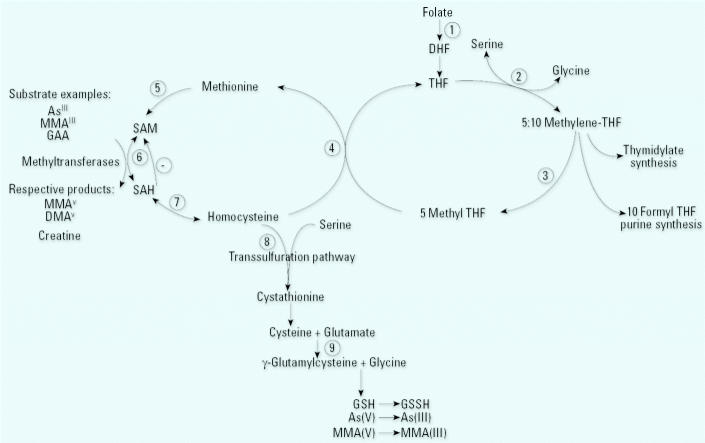Figure 2.
Overview of one-carbon metabolism. 1. Dietary folates are reduced to dihydrofolate (DHF) and tetrahydrofolate (THF) by dihydrofolate reductase. 2. The β-carbon of serine is transferred to THF by serine hydroxymethyltransferase, forming 5,10-methenyl-THF and glycine. 3. At a major branch point between transmethylation reactions and nucleotide biosynthesis, 5,10-methenyl-THF can be reduced to 5,10-methylene-THF and further reduced to 5-methyl-THF by 5,10-methylene-THF reductase. 4. In a reaction catalyzed by the vitamin B12-containing enzyme, methionine synthetase, the methyl group of 5-methyl-THF is transferred to homocysteine, generating methionine and regenerating THF. 5. Methionine adenosyl-transferase activates methionine to form S-adenosylmethionine (SAM). 6. SAM serves as a universal methyl donor for numerous acceptors, including predominantly guanidinoacetate (GAA), but also DNA, arsenic, and others, in reactions that involve a number of methyltransferases. 7. The by-product of these methylation reactions, S-adenosylhomocysteine (SAH), is hydrolyzed to generate homocysteine. SAH is a potent inhibitor of most SAM-dependent methylations. 8. Homocysteine is either used to regenerate methionine or is directed to the transsulfuration pathway through which it is ultimately catabolized. 9. The transsulfuration pathway is also responsible for glutathione (GSH) biosynthesis.

